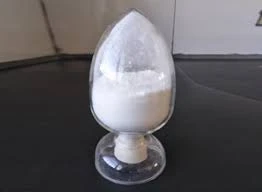Understanding Partially Hydrolyzed Polyacrylamide Properties, Applications, and Benefits
Partially hydrolyzed polyacrylamide (PHPA) is a synthetic polymer that has gained significant attention due to its versatile applications across various industries. This compound is derived from the polymerization of acrylamide, followed by partial hydrolysis, which introduces hydrophilic properties into the polymer structure. The unique characteristics of PHPA make it an essential ingredient in fields such as agriculture, petroleum production, wastewater treatment, and many more.
Properties of Partially Hydrolyzed Polyacrylamide
PHPA is characterized by its water-soluble nature, which is a direct result of its partial hydrolysis. The degree of hydrolysis can be controlled during the manufacturing process, allowing for the customization of its properties according to specific needs. This control over hydrolysis enables the adjustment of viscosity, molecular weight, and charge density.
The partial hydrolysis of polyacrylamide translates into improved performance in various applications. One of the critical properties of PHPA is its ability to increase the viscosity of water-based solutions. As a hydrophilic polymer, PHPA can easily interact with water, forming a thick gel-like consistency that enhances its efficacy in applications requiring fluid retention and soil stabilization.
Applications of Partially Hydrolyzed Polyacrylamide
1. Agriculture In agricultural practices, PHPA serves as a soil conditioner that enhances water retention in sandy soils. By improving soil structure, it facilitates better moisture management, thus promoting healthier plant growth. Farmers utilize PHPA to optimize irrigation practices, especially in arid regions where water scarcity is a significant concern.
2. Oil and Gas Industry In the petroleum sector, PHPA is commonly used as a viscosifier in drilling fluids. It helps to reduce friction, enhance the fluid's carrying capacity for cuttings, and stabilize the borehole. Its properties contribute to efficient drilling operations while minimizing environmental impacts.
partially hydrolysed polyacrylamide

3. Wastewater Treatment PHPA plays a crucial role in the wastewater treatment process. It acts as a flocculant, helping to aggregate particles and impurities, allowing for easier removal during the treatment process. Its use can lead to improved sedimentation and filtration efficiency, resulting in cleaner effluent.
4. Cosmetics and Personal Care The cosmetic industry has recognized PHPA for its thickening and stabilizing properties. It is commonly found in various cosmetic formulations, such as lotions, creams, and gels, where it contributes to the desired texture and enhances the product's performance.
Benefits of Using Partially Hydrolyzed Polyacrylamide
The benefits of incorporating PHPA into various applications are manifold. Its ability to modulate viscosity and improve water retention makes it a popular choice among agriculturalists and industrial users alike. In agriculture, PHPA can lead to reduced irrigation costs and improved crop yields, while in the oil industry, it contributes to safer drilling practices and less environmental disruption.
Moreover, PHPA's role in wastewater treatment not only enhances the efficiency of filtration processes but also aids in meeting regulatory standards for effluent discharge. Its biodegradability further adds to its appeal, making it an environmentally friendly choice in comparison to other synthetic polymers.
Conclusion
Partially hydrolyzed polyacrylamide is a multifunctional polymer that brings numerous advantages to various industries. Its unique properties and tailorability make it a valuable asset in agriculture, petroleum, wastewater treatment, and cosmetics. As research continues to explore new formulations and applications, PHPA is poised to remain pivotal in addressing modern challenges across different sectors. Whether improving crop yields, enhancing drilling efficiency, or contributing to cleaner wastewater, PHPA stands out as a testament to the benefits of synthetic polymers in contemporary applications.

